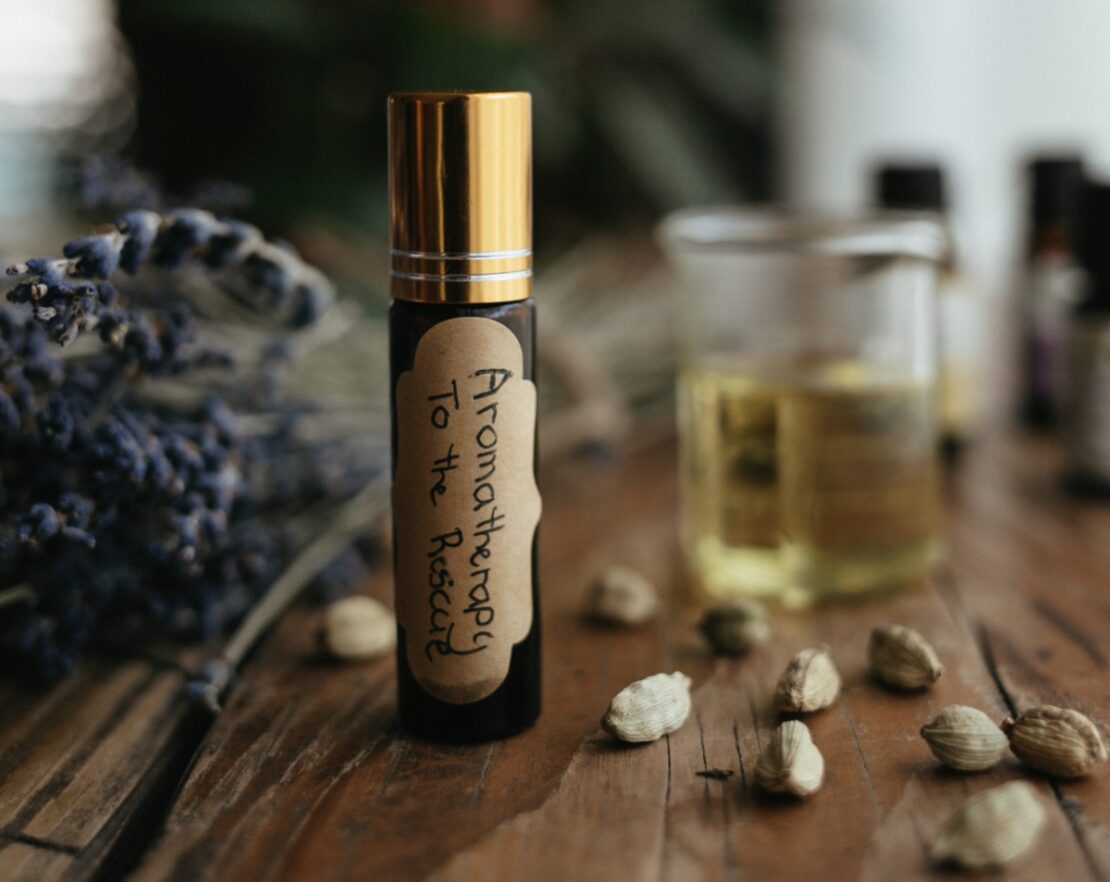
How to Use Aromatherapy for Olfaction Support in the Emotional Sphere + 3 Essential Oil Recipes to Support Your Emotions
There are times in our lives when our emotions may become overwhelming, and we may turn to pharmaceuticals and other forms of care such as psychotherapy and lifestyle interventions in addition to our plant allies to help us rebalance. But for day-to-day ups and downs or seasonal emotional swings, olfaction using our precious essential oils, along with healthy lifestyle choices like good nutrition, exercise, and social connection can help us moderate, enhance, or soothe our emotions to maximize our quality of life and ability to meet our personal wellness goals.
Aromatherapy is unique within the wellness strategy toolbox as the only approach that specifically utilizes olfaction to effect changes in our emotional state or our general state of well-being. Other chemical-based approaches affect us through some internal metabolic process or a direct topical, cutaneous action. While essential oils can affect us via both of those traditional routes, their ability to interact with our nervous systems through our olfactory system can powerfully influence us in both our physiological and emotional spheres.
Any discussion of olfaction and essential oils requires some understanding of the chemistry involved, as it is the individual chemicals that comprise the essential oils that act upon our nervous systems, whether directly through olfaction or indirectly through other routes. Although we smell the herb rosemary (Salvia rosmarinus) or a flower like the rose (Rosa spp.) and recognize each as one, unique aroma, each is made up of a unique combination of volatile molecules, and it’s this unique combination that we learn to associate with rosemary or rose.
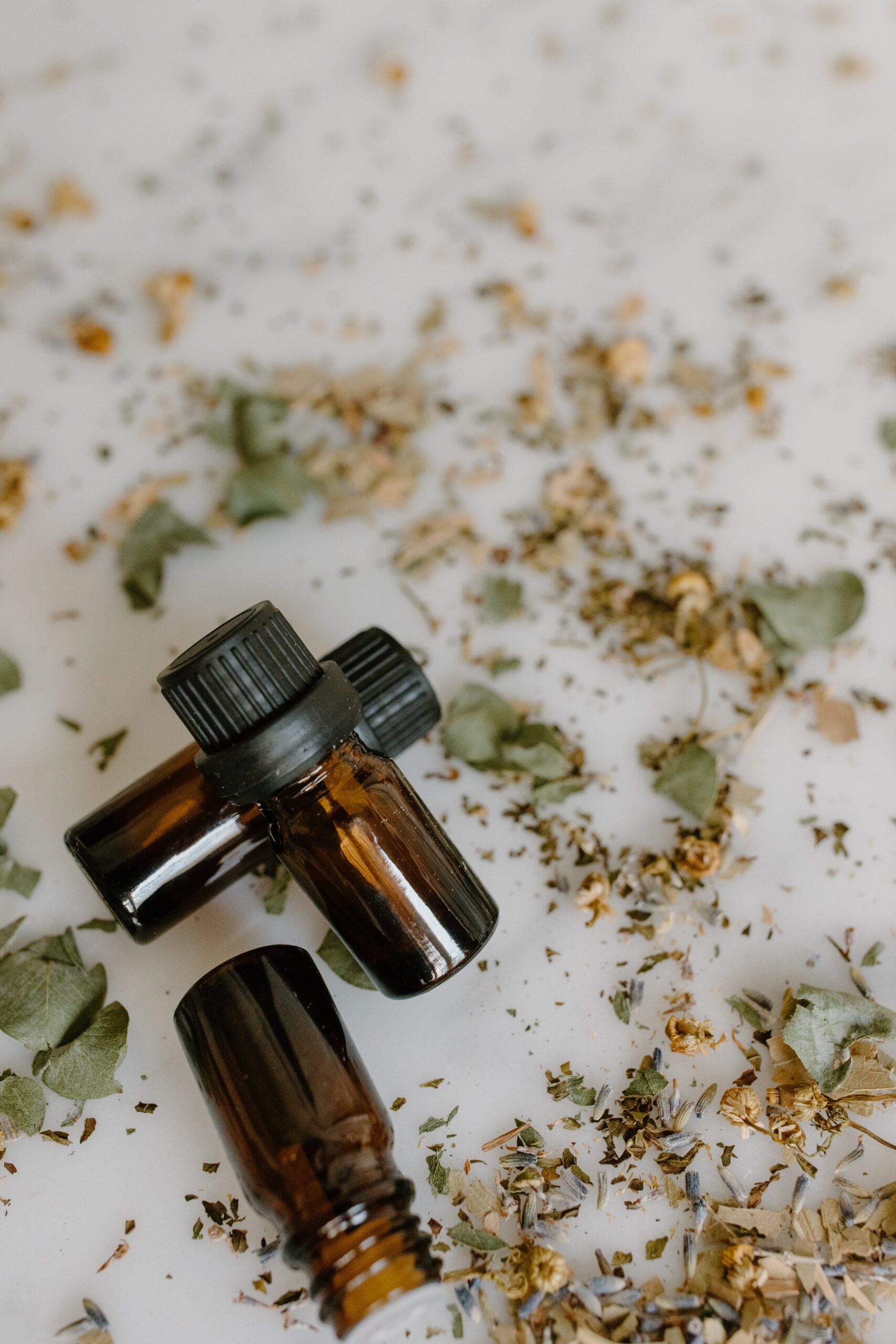
Volatile molecules are so small that they evaporate easily, transferring first to the air and then into our noses as we inhale. Their minute size also allows them to diffuse across cell membranes fairly easily for olfaction support.
Because essential oils, with the exception of expressed citrus oils, are created through the process of distillation, they are comprised almost exclusively of volatile molecules, which is also why they evaporate so quickly when applied to a surface. These volatile molecules fall into a few broad family groups, within which, terpenes, alcohols, aldehydes, and esters have the strongest emotional effects (Bowles, 2003). These broad constituent categories can then be broken down into smaller chemical clusters, depending on their individual structural differences within the family group. How our brains interpret the combinations of chemicals from these various families determines how we interpret any individual aroma or smell. How our brains respond to these individual chemicals can affect our moods and offer olfaction support us in the emotional sphere.
Unfortunately, given both the complexities and variabilities within and between human bodies, it is impossible to connect one particular emotional response with any given chemical family. However, we can generalize broadly, taking into consideration that both differences among individuals and in dosage (amount inhaled) can affect an outcome. For instance, if a person strongly dislikes a certain aroma, regardless of the potential that essential oil has to positively affect her or his emotions, it is less likely to be effective than an aroma that person enjoys. Additionally, some essential oils can induce opposite olfaction effects when used at very high concentrations. In this case, if a small amount is good, hold the dosage there. More is not necessarily better.
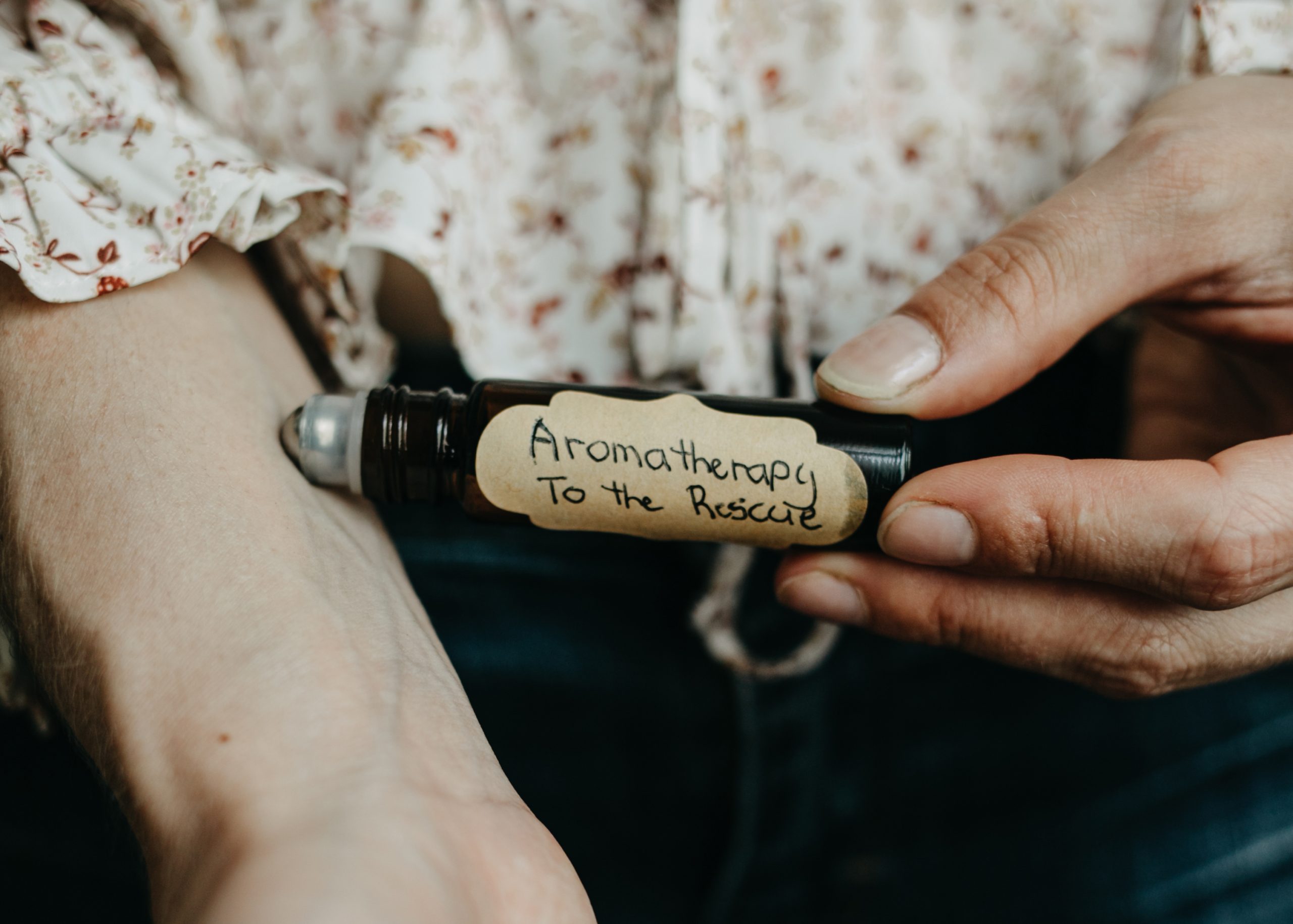
Keeping in mind that broad generalizations always carry exceptions to the rules, we can generally describe how these chemical families can affect our emotions and support olfaction as follows (Shutes & Skipper, n.d.):
Terpenes
- Monoterpenes tend to be uplifting, energizing, refreshing, and sunny.
- Sesquiterpenes tend to be sedative, soothing, calming, grounding, and relaxing.
Alcohol
- Monoterpenols tend to be a nervous system tonic and support emotional balance. They are usually stimulating to body systems yet calming to the autonomic nervous system, except for linalool-rich oils, which tend to be more sedative and calming.
- Sesquiterpenols tend to be calming and soothing, sometimes sedative.
Aldehydes
- Aldehydes tend to ease worries and be tonifying to the nervous system, calming, and sedative.
Esters
- Esters tend to be adaptogenic, calming, relaxing, balancing, and sedative.
- One particular synergy between monoterpenols and esters, such as linalool and linalyl acetate in lavender (Lavandula angustifolia) essential oil, is notable, being simultaneously uplifting yet calming. It also has useful physiological actions.
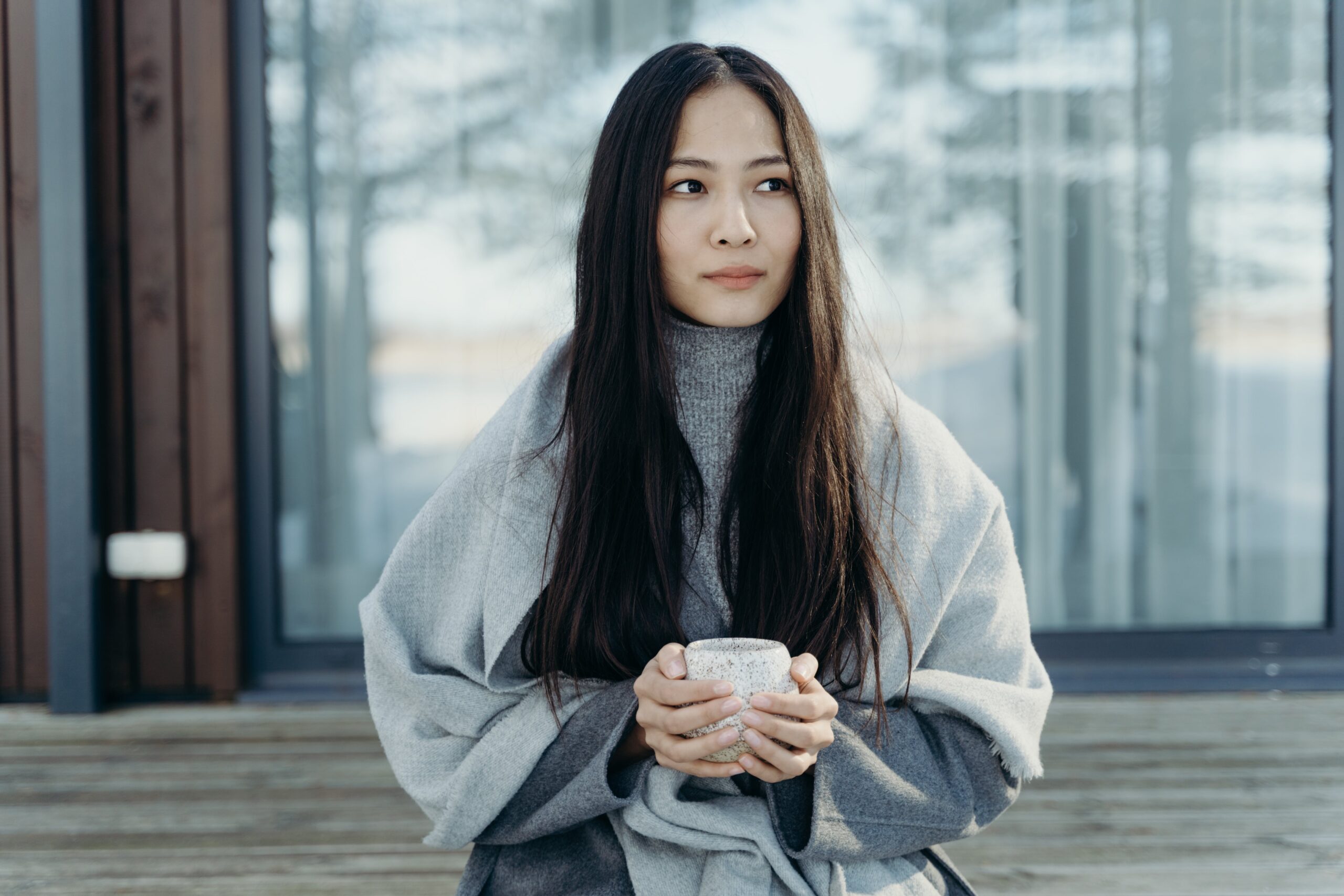
Essential Oils For Winter Moods
Winter is a beautiful season, with snow and cool, crisp mornings in many places. However, the abundance of holidays this time of year, as well as the possible darkness and quiet of deep winter that follows, can elicit a wide range of emotions. While some of these emotions are positive and energizing, others can seem overwhelming, crippling our joy and wellbeing.
When these emotions become too much for us, we may pull out our essential oils for olfaction support0 through those challenges. Of course, emotional ups and downs are not unique to winter and the holiday season—consider these essential oil supports any time of year for addressing emotional ebbs and flows.
Some suggested essential oils to address challenging emotions:
Grief/Despair (Holmes, 2019)
Coriander (Coriandrum sativum) seed, frankincense (Boswellia spp.), geranium (Pelargoniumgraveolens) aerial parts, ravintsara (Cinnamomum camphora) leaf, rose (Rosa damascena) petal, saro (Cinnamosma fragrans) leaf, Siberian fir (Abies sibirica) needle, jasmine (Jasminum officinale) flower, lemon balm (Melissa officinalis) aerial parts, neroli (Citrus aurantium subsp. amara) peel, wintergreen (Gaultheria procumbens) leaf
Overexcitability
Vetiver (Chrysopogon zizanioides) root, lavender (Lavandula angustifolia) flower bud, neroli (Citrus aurantium subsp. amara) peel, patchouli (Pogostemon cablin) leaf
Overwhelm (Holmes, 2019)
Cistus (Cistus ladanifer) leaf, niaouli (Melaleuca quinquenervia) leaf
Seasonal depressive thoughts and mood
Lemon (Citrus limon) peel, lavender (Lavandula angustifolia) flower bud, peppermint (Mentha x piperita) leaf (Dong & Jacob, 2016)
Stress
Bergamot (Citrus aurantium subsp. bergamia) peel, lavender (Lavandula angustifolia) flower bud, petitgrain bigarade (Citrus aurantium) leaf, sweet orange (Citrus sinensis) peel, Roman chamomile (Chamaemelum nobile) flower, marjoram (Origanum marjorana) aerial parts
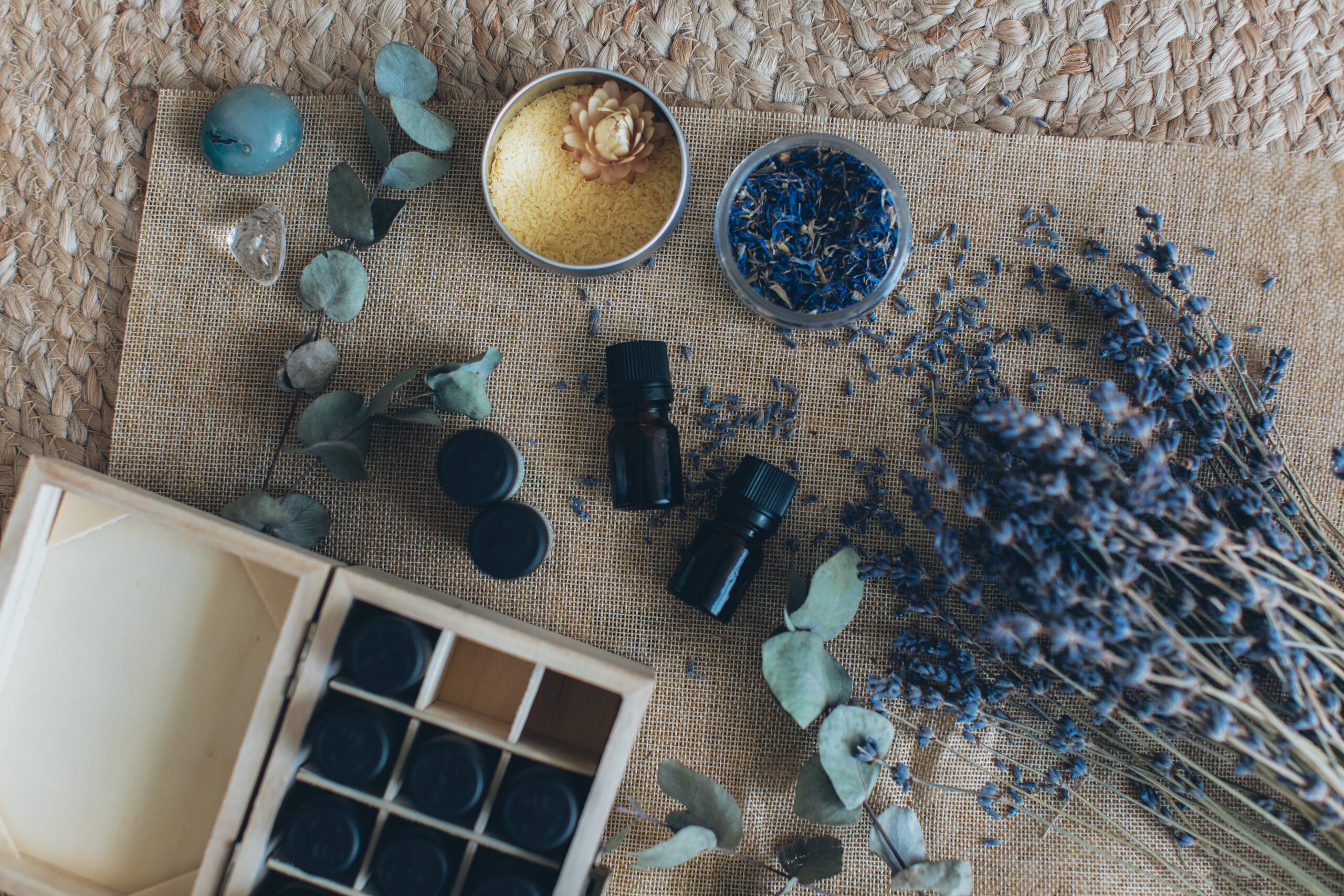
Other Essential Oil Examples for Emotional Ups and Downs
Lavender (Lavandula angustifolia)
Lavender is well known for its emotional calming and sedating properties. Scientific studies support this commonly held wisdom. The effects of lavender for olfaction support are usually attributed to its high linalool content as well as its linalool-linalyl acetate synergy. Lavender was effective at lowering anxiety and blood cortisol levels in candidates for open-heart surgery (Hosseini, et al., 2016). Researchers Dong and Jacob (2016) found that lavender (Lavandula angustifolia) inhalation was significantly effective in reducing blood pressure and heart rate and improving mood; this effect was even greater when combined with light therapy.
Lemon balm (Melissa officinalis)
Lemon balm or Melissa is high in citral, a pairing of the aldehydes neral and geranial, citronellal, another aldehyde, and geraniol, an alcohol. This makes it calming and sedative. It can calm agitation, and restlessness, and soothe occasional sleeplessness. It has a light, lemony aroma, which can uplift as well, making it helpful both for excessive worry and depressive thinking.
Citrus oils, such as bergamot (Citrus aurantium subsp. bergamia), lemon (Citrus limon), or sweet orange (Citrus aurantium var. dulcis) are high in monoterpenes, making them uplifting, bright, and stimulating. Dong and Jacob (2016) found that lemon (Citrus limon), like lavender, inhalation was significantly effective in reducing blood pressure and heart rate, and improving mood; this effect was even greater when combined with light therapy. Lemon essential oil was the most effective of the three oils studied (lemon, lavender, and peppermint). Bergamot (Citrus aurantium subsp. bergamia) can be effective at calming stress and worry (Pasyar et al., 2020). Other studies have also found evidence to support olfaction by the uplifting effects of inhaling citrus essential oils (Fernandes, et al., 2012).
Geranium (Pelargonium graveolens)
Geranium essential oil is high in alcohols. It has demonstrated calming and emotion-soothing properties (Goli, et al., 2022).
Peppermint (Mentha x piperita)
Peppermint essential oil is usually stimulating and uplifting. Scientific research has demonstrated that peppermint (Mentha x piperita) inhalation was significantly effective in reducing blood pressure and heart rate, and improving mood; again, this effect was even greater when combined with light therapy (Dong & Jacob, 2016).
Roman Chamomile (Chamaemelum nobile)
Roman chamomile essential oil tends to be calming and can even be sedating (Moss, et al., 2006) with its significant proportion of ester constituents.
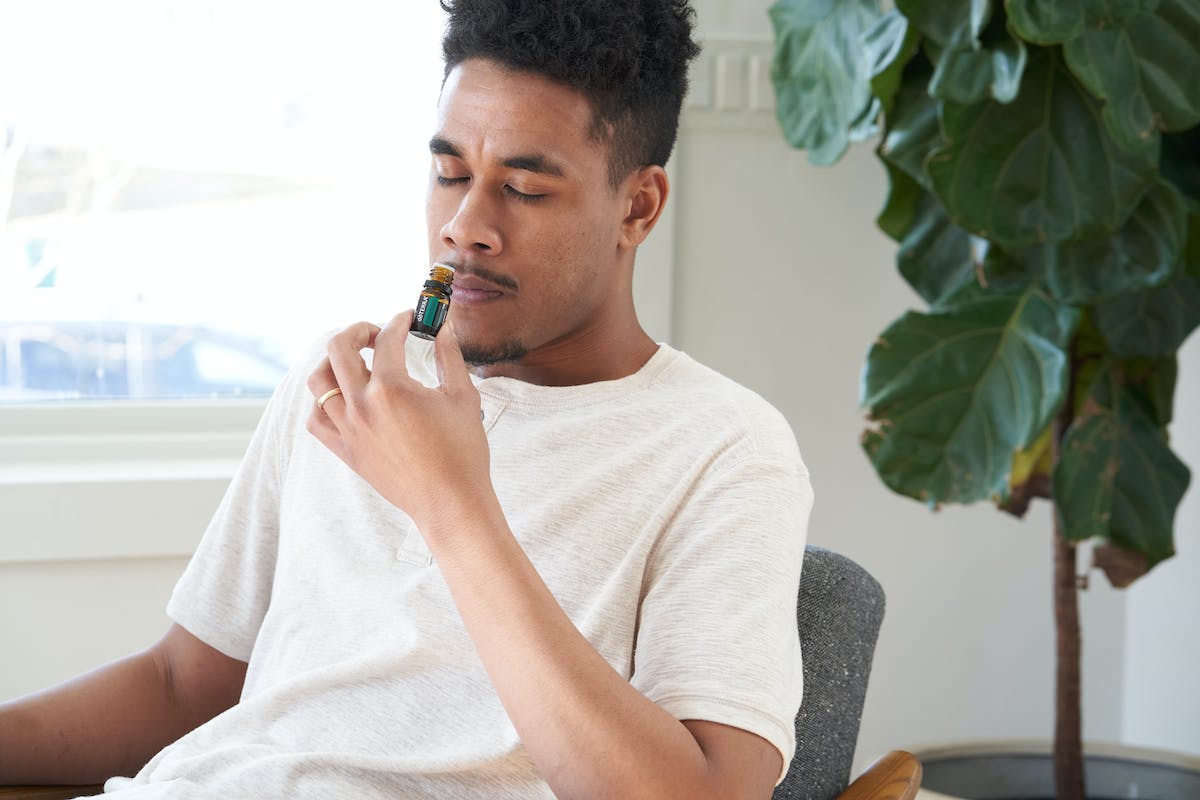
How Does Olfaction Work?
Essential oils are derived from plants, but they, themselves, are not natural substances, which means that our bodies interact and process them as xenobiotics. Essential oils are also mixtures of chemicals, not single substances, so our bodies deal with the many constituents present within the essential oil, not with the essential oil itself (Ratajc, 2020). Each constituent travels along its own metabolic pathway or stimulates its own part of the nervous system. This can result in essential oils having multiple effects simultaneously, like other herbal products, and increasing the essential oil dosage to enhance one particular constituent’s effect can cause an overload in a different area. This is one reason why sometimes essential oil blends can be more effective than using a single essential oil.
When we inhale essential oils to address the physiological sphere, the essential oil constituents pass into the respiratory and circulatory systems to perform these actions. When we inhale essential oils to address the emotional sphere, the constituents directly affect the brain via the olfactory system. If we use inhalation, we will affect both spheres (Ratajc, 2020). How we approach the process of selecting, blending, and then utilizing the oils will determine which of these pathways predominates.
We can simplify the olfactory system to its most basic components. At the top back of the nasal cavity is the olfactory epithelium, a patch of neurons with axons extending directly into the brain. Each neuron can detect only one specific chemical, but we have approximately 400 different types of neurons. Different combinations of volatile chemicals interact with these neurons (Ratajc, 2020), permitting us to experience the broad variety of aromas we know, both those we love and those we despise, everything from flowers and food to rotten eggs and doggy doo.
Kadohisa (2013) explains in detail how aromas stimulate brain responses. More simply, when a volatile chemical or odorant connects with its target neuron, stimulating it, the neuron sends an electrical impulse to the olfactory bulb. The olfactory bulb is further connected to other parts of the brain with its neuronal network. This means the brain itself never comes in direct contact with any of these odorant molecules, yet these molecules cause an almost immediate effect on the brain without having to travel through the circulatory system (Kadohisa, 2013; Ratajc, 2020). EEG research has demonstrated that fragrances directly modulate different brain wave activities (Sowndhararajan & Kim, 2016).
Sadly, it appears that this system does not work if we completely lose our sense of smell, a condition called anosmia, although the cause of the anosmia does make a difference. For instance, if there is damage to the olfactory lobe, the system may no longer work, but if the loss of smell is due to COVID-19, olfactory training may be able to restore some system functionality (Donelli, et al., 2023).
This system is also highly subjective and individual. Hedonics play a significant role, as well as a person’s environment, memories and odor associations, culture, emotional state (Distel, 1999), and expectations (Moss, et al., 2006). This can even change from one experience to the next, as most clearly seen with pregnant women, who might find an aroma enjoyable one day and nauseating the next. Also, if one strongly dislikes an aroma, it is unlikely to induce positive emotions, despite the essential oil’s chemistry (Ratajc, 2020).
Taking a moment to speak from personal experience, I have found that sometimes I can hide a less-pleasant aroma within a blend, thereby taking advantage of its constituents without its offensive aroma. I have also found some aromas to be more palatable at times when they were the most helpful, and some I have found increasingly tolerable the more I used them. I always suggest blending poorly tolerated aromas with essential oils that can improve your overall experience and using the offending essential oils in minute amounts; I often add sweet orange (Citrus aurantium var. dulcis) to questionable-smelling blends to improve their aroma. There are still some essential oils that no blend can make me enjoy, but it’s always worth a try.
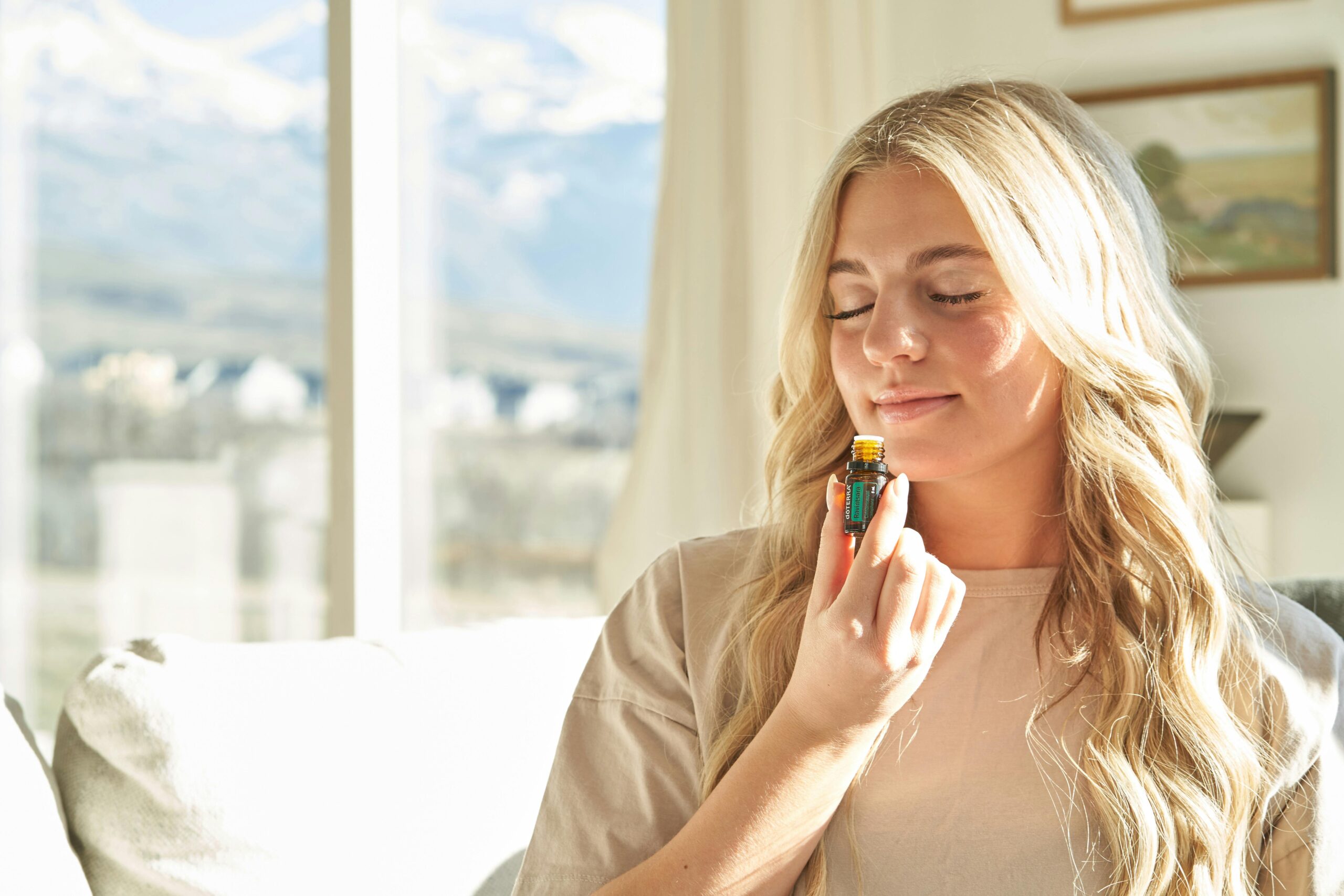
How Do I Use Olfaction to Support the Emotional Sphere?
If you wish to carry your emotional support blend around with you, it’s best to use an aromatic inhaler stick, a plastic or metal tube with a cotton wick inside. It’s also possible to use a diffuser for general, environmental effects or a cotton ball or tissue for personal use.
Intermittent use is more effective than extended use. Our brains are wired to sense changes in the environment. Our brains quickly adapt to unchanging information, called habituation, and if the information stays static for an extended period, our brains will adapt to that stimulus by sensory receptors becoming less sensitive to that stimulus (Ratajc, 2020).
Think about being at a loud concert. Over time, it may seem the concert is not as loud anymore, but when you leave, you find you may have trouble hearing normal conversation. Your hearing has become less sensitive to the loud (damaging) sounds. While damage may not have occurred right away, the decreased sensitivity to the stimuli happened fairly quickly. The same goes for smells. You may smell the bread baking when you first enter the house, but soon it will smell less strong, or you may no longer smell it at all. Smelling the essential oils for 5-10 minutes at a time with a half-hour to hour breaks in between will often be adequate for even significant effects in olfaction support.
To summarize using olfaction to support the emotional sphere:
- Essential oil blends may be more effective than a single oil, although sometimes a single oil is all that is required.
- Lower concentrations tend to be more effective; higher concentrations may even have a negative influence.
- Intermittent, short-duration use is more effective than constant exposure.
- Many variables such as memory associations, emotional states, physical states, and even the power of suggestion can affect the impact an essential oil or synthetic aroma has on the emotional sphere.
- Anosmia may negate olfactory psychological effects, although physiological effects are still possible.
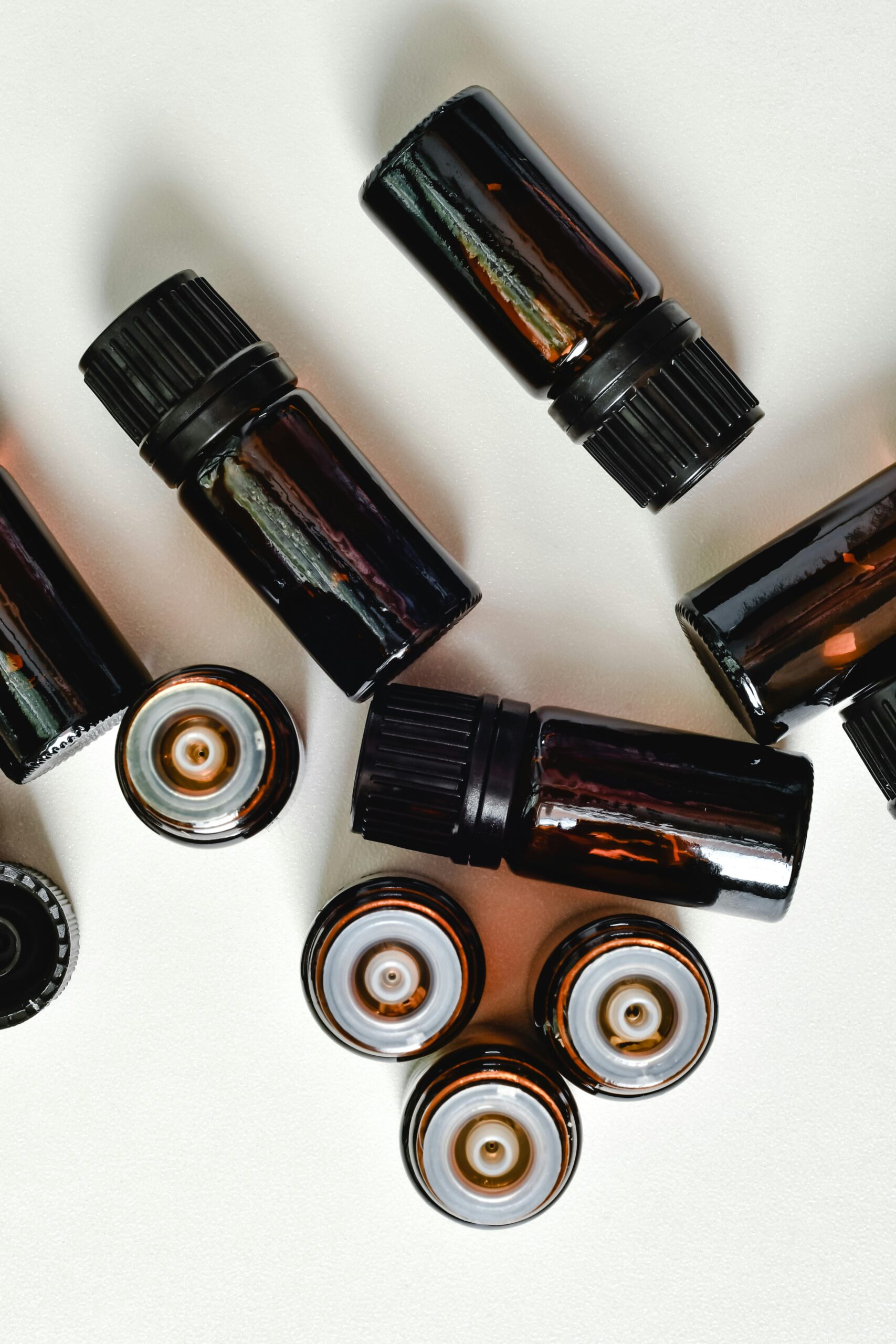
Here are a few blends you may wish to try to support your mood through olfaction: Stress Calmer, No More Jumpies, and Sunny Skies and Open Eyes.
1 aromatic inhaler stickStress Calmer
8 drops bergamot (Citrus aurantium subsp. bergamia) peel
5 drops lavender (Lavandula angustifolia) flower bud
1 drop vetiver (Chrysopogon zizanioides) root
1 aromatic inhaler stickNo More Jumpies
1-2 drops vetiver (Chrysopogon zizanioides) root
6 drops sweet orange (Citrus aurantium var. dulcis) peel
3 drops lemon balm (Melissa officinalis) aerial parts
1 aromatic inhaler stickSunny Skies and Open Eyes
10 drops combination of citrus essential oils (e.g., sweet orange (Citrus aurantium var. dulcis) peel, lemon (Citrus limon) peel, bergamot (Citrus aurantium subsp. bergamia) peel, lime (Citrus aurantifolia) peel, bitter orange (Citrus aurantium) peel, mandarin/tangerine (Citrus reticulata) peel)
1 drop patchouli (Pogostemon cablin) leaf
1 drop neroli (Citrus aurantium subsp. amara) peel
In Closing,
Essential oils are unique in their ability to affect us psychologically through the olfactory pathway. The chemical constituents stimulate nerves in the nose, which then send messages directly to the brain, affecting our emotional state. Although certain chemical constituents tend to have fairly predictable effects, an individual’s situation can affect or even dramatically change these effects. Safe use also differs with circumstances and personal characteristics. The concentrations of the aroma can also affect our perception of that odor. Once you find the aromas that work for you, you have a powerful tool to moderate your moods as a piece of your wellness puzzle.
FURTHER READING:
A Guide To Essential Oil Safety
A Closer Look at Essential Oils and Safety
How Does Scent Affect Mood?
Herbal Aphrodisiac Candle
Essential Oils for Sleep: Aromatherapy and Insomnia
Two Personal Inhaler Essential Oil Blends to Help You Through Stressful Times
Essential Oils for Anxiety and Stress Relief
5 Tips for Using Essential Oils for Stress Relief
Essential Oils and Mental Health
Aromatherapy in the treatment of psychiatric disorders: A review
Olfactory Training and Recovery of Smell Loss
What is Aromatherapy? The Dividing Lines Between Feel-Good and Medicine
Effects of Fragrance on Emotions: Moods and Physiology
The Psychology of Perfume: Art vs. Science Commentary
Psychosensory Aromatherapy Research Project PDF
The Power of Odor Persuasion: The Incorporation of Olfactory Cues in Virtual Environments for Personalized Relaxation
Aromatherapy for healing the spirit: Restoring emotional and mental balance with essential oils
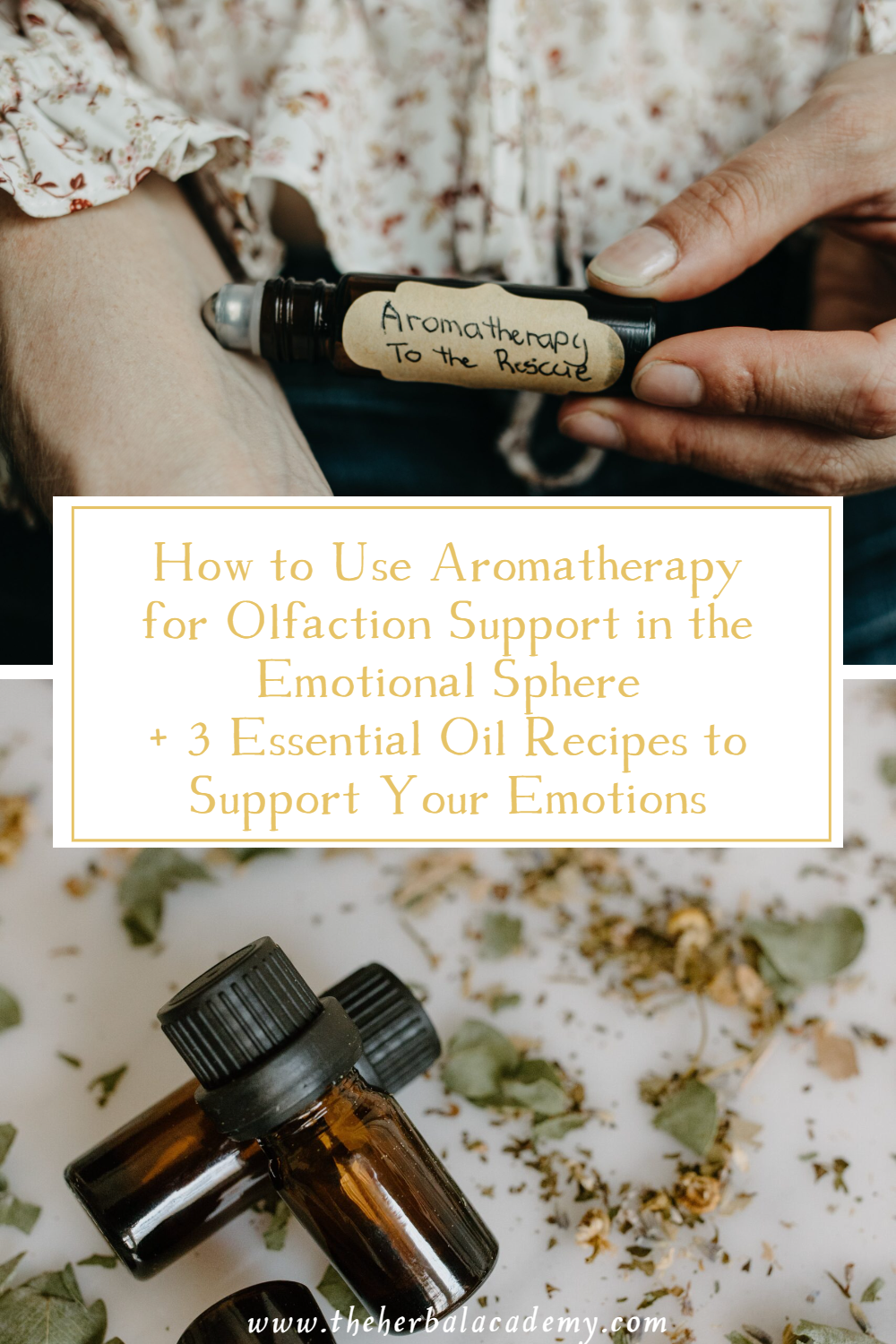
REFERENCES
Battaglia, S. (2018). The complete guide to aromatherapy (3rd edition): Volume 1 – Foundations & materia medica. Black Pepper Creative.
Bensafi, M., Rouby, C., Farget, V., Bertrand, B., Vigouroux, M., & Holley, A. (2002). Autonomic nervous system responses to odors:The role of pleasantness and arousal. Chemical Senses, 27(8), 703-709. https://doi.org/10.1093/chemse/27.8.703
Bowles, E.J. (2003). The chemistry of aromatherapeutic oils (3rd edition). Allen and Unwin.
Distel, H. (1999). Perception of everyday odors–correlation between intensity, familiarity and strength of hedonic judgement. Chemical Senses, 24(2), 191–199. https://doi.org/10.1093/chemse/24.2.191
Donelli, D., Antonelli, M., & Valussi, M. (2023). Olfactory training with essential oils for patients with post-COVID 19 dysfunction: A case series. European Journal of Integrative Medicine, 60. https://www.ncbi.nlm.nih.gov/pmc/articles/PMC10102705/
Dong, S., & Jacob, T.J.C. (2016). Combined non-adaptive light and smell stimuli lowered blood pressure, reduced heart rate and reduced negative affect. Physiology and Behavior, 156, 94-105. http://dx.doi.org/10.1016/j.physbeh.2016.01.013
Pimenta, F., Correia, N., de Sousa, D. P., Albuquerque, K.L.G.D., Da Rosa, M.R.D., Pimenta, M.B.F.,…& de Almeida, R. N. (2012). Naturally occurring anxiolytic substances form aromatic plants of the genus Citrus. Journal of Medicinal Plants Research, 6(3), 342-347. https://doi.org/10.5897/JMPR11.978
Goli, R., Arad, M., Mam-Qaderi, M., & Parizad, N. (2022). Comparing the effects of geranium aromatherapy and music therapy on the anxiety level of patients undergoing inguinal hernia surgery: A clinical trial. Explore: The Journal of Science and Healing, 18(1), 57-63. https://doi.org/10.1016/j.explore.2020.08.004
Holmes, P. (2019). Aromatica: A clinical guide to essential oil therapeutics (Vol. 2). Singing Dragon.
Hosseini, S., Heydari, A., Vakili, M., Moghadam, S., & Tazyky, S. (2016). Effect of lavender essence inhalation on the level of anxiety and blood cortisol in candidates for open-heart surgery. Iranian Journal of Nursing Midwifery Research, 21(4), 397-401. DOI: 10.4103/1735-9066.185582
Kadohisa, M. (2013). Effects of odor on emotion, with implications. Frontiers in Neuroscience, 7(66), 1-6. http://dx.doi.org/10.3389/fnsys.2013.00066
Moss, M., Howarth, R., Wilkinson, L., & Wesnes, K. (2006). Expectancy and aroma of Roman chamomile influence mood and cognition in healthy volunteers. The International Journal of Aromatherapy, 16(2), 63-73. https://doi.org/10.1016/j.ijat.2006.04.002
Pasyar, N., Rambod, M., & Araghi, F. (2020). The effect of bergamot orange essence on anxiety, salivary cortisol, and alpha amylase in patients prior to laparoscopic cholecystectomy: A controlled trial study. Complementary Therapies in Clinical Practice, 39. https://doi.org/10.1016/j.ctcp.2020.101153
Ratajc, P. (2020). Essential oil kinetics masterclass: From application to effect. Tisserand Institute.
Shutes, J., & Skipper, C. (n.d.). French aromatherapy. The East-West School for Herbal and Aromatic Studies.
Sowndhararajan, K., & Kim, S. (2016). Influence of fragrances on human psychophysiological activity: With special reference to human electroencephalographic response. Sciencia Pharmaceutica,84(4), 724-751. https://doi.org/10.3390/scipharm84040724







